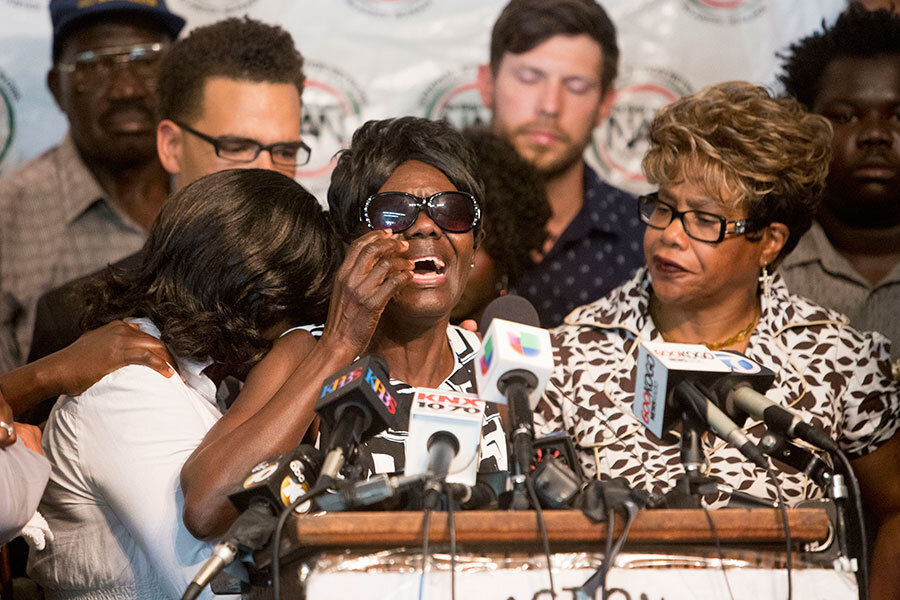El Cajon shooting: How should we police people in emotional distress?
Loading...
The mother of an unarmed black man has said that her son needed help during a mental breakdown when he was shot dead in Southern California on Tuesday.
Pamela Benge said that her son, Alfred Olango, was grieving for a dear friend, and “needed someone who was going to calm him down and then take care of the situation.” Instead, he was shot within minutes of police arriving at the scene.
Authorities said the officers felt that their own lives were in danger: A still from a bystander’s video showed Mr. Olango pointing an object at an officer. That object was, it turned out, an electronic cigarette – but El Cajon Police Chief Jeff Davis described Olango as having adopted a “shooting stance” that may have threatened the officers.
The contrasting perspectives in this case provide a window into the complex issue of policing people in emotional distress or with mental illness. In the moment, it can be difficult for police, who must make split-second decisions, to strike the right balance between providing assistance and avoiding risking their own lives.
In a similar case in Charlotte, N.C., last week, police shot and killed Keith Lamont Scott, a man diagnosed with a traumatic brain injury whom police said pointed a gun at them.
Police reform advocates suggest that one approach that can help is crisis intervention training. About 12 percent of law enforcement agencies nationwide currently use these programs to teach police officers to treat individuals experiencing mental distress with care and compassion. Recognizing mental distress and knowing how to address it may help allay officers’ fears and prevent unnecessary shootings, advocates say.
A similar strategy could have helped save a life in this case, critics of the department say. Dan Gilleon, an attorney for the Olango family, told Reuters in a phone interview that officers should have taken cover and talked to Olango from a distance.
One law enforcement agency – the Los Angeles Police Department – takes this approach further, teaming police officers with trained counselors while on patrol. The effects of this program have been pronounced, as The Christian Science Monitor’s Noelle Swan reported in 2015.
By partnering beat cops with mental health clinicians, the MEU reined in costs associated with frivolous 911 calls. It also connected thousands of individuals with counseling and support, reducing incidences of force used on individuals with mental illness and alleviating the burden on overcrowded emergency rooms and the criminal justice system.
The program – which has seen doctors, nurses and social workers working with the LAPD – has saved taxpayers money and helped police safely address the needs of individuals. There have still been some issues: Deadly force was used against Ezell Ford, a man with mental illness, and Samuel Arrington, a mentally ill homeless man, brought a lawsuit against the LAPD for excessive force.
The model has since been expanded to other cities, including Boston.
The El Cajon shooting is currently under review. The police department drew fire from protesters over the image of Olango pointing the e-cigarette, which they said was an unfair representation of the situation. As in the case of Keith Scott, protesters have called for the full video to be released. Police say this recording will be made available after the District Attorney’s investigation.
This report includes material from Reuters and the Associated Press.






